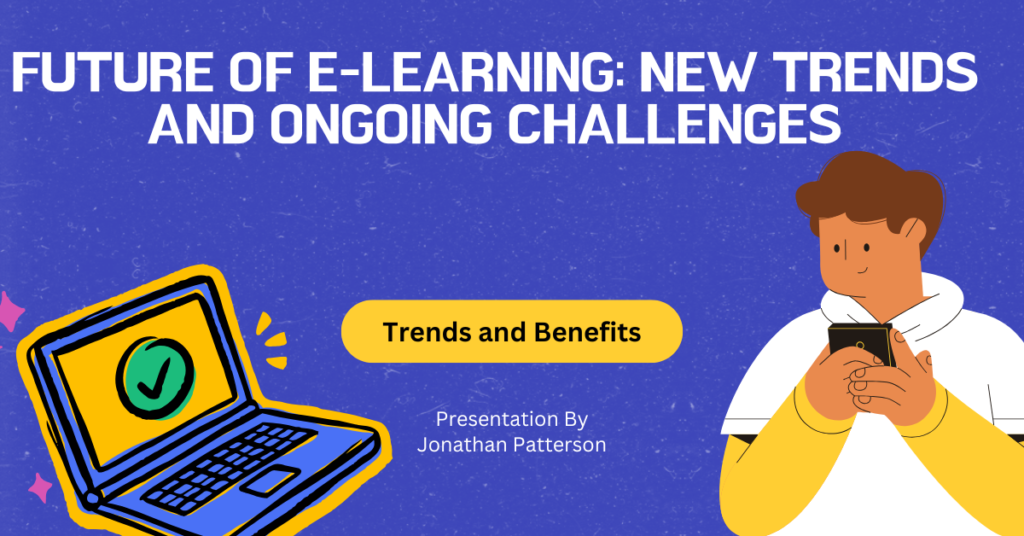Future of E-Learning: New Trends and Ongoing Challenges
Education has changed a lot because of online learning. This shift became even faster due to the COVID-19 pandemic, but it’s not just a temporary change. Online learning is now becoming a permanent part of how education is given around the world. It offers flexibility and easy access, allowing people from different backgrounds to get quality education. But as we look ahead, we need to think about the new trends that are shaping online learning and the challenges that come with it. To make the most out of online education, it’s important to address these challenges and understand how technology is driving this transformation.
Technological Advancements Driving Online Learning
One of the biggest changes in online learning is the use of new technologies that make learning better and more fun. Artificial Intelligence (AI) is one of the most important tools here. It helps create personalized learning experiences for students. AI can study how well a student is doing and change the lessons to match the student’s speed and style of learning. This makes students more interested in the subject and helps them learn better.
Another exciting development is the use of Virtual Reality (VR) and Augmented Reality (AR) in online courses. These technologies allow students to experience real-world situations without leaving their homes. For example, medical students can practice surgeries in a virtual environment, which helps them gain real skills without any risk. These tools make learning more interactive and practical, giving students hands-on experience even in an online setup.
Expanding Access to Education
Online learning has made education available to more people than ever before. Thanks to Massive Open Online Courses (MOOCs), students from all over the world can join courses from top universities like MIT and Harvard for free. This means that even if someone lives in a remote village or doesn’t have much money, they can still access high-quality education just with an internet connection.
However, not everyone can take full advantage of this opportunity. Many students in rural areas or from poor families don’t have reliable internet connections or digital devices like laptops and tablets. This digital divide is a big problem because it stops many students from benefiting from online education. To truly make education accessible for everyone, we need to find ways to provide better internet and digital tools to students in need.

The Shift Toward Lifelong Learning
Today’s job market is changing very fast, and people need to keep learning new skills throughout their lives. This idea is called lifelong learning. Online platforms are perfect for this because they offer a wide variety of courses, from traditional subjects like science and math to practical skills like coding, graphic design, and digital marketing. The best part is that people can learn without leaving their jobs or affecting their personal lives.
But there’s a catch. Since online learning doesn’t have a fixed classroom schedule or face-to-face interaction with teachers, many students find it hard to stay motivated. Without a teacher or classmates to push them, some students lose interest and drop out of courses before finishing them. Keeping students engaged and motivated in an online setting is one of the biggest challenges for online education platforms.
Quality and Accreditation Concerns
As more schools, colleges, and private institutions offer online courses, it’s important to make sure that these courses are of good quality. Accreditation is a process that checks if a course meets certain standards, but with the fast growth of online education, it’s getting harder to monitor the quality of all these programs. There’s a need for better systems to check and approve online courses so that students know they’re getting a proper education.
Another problem is the perception that online degrees are not as good as traditional classroom degrees. Many people, including employers, still think that a degree earned online is not as valuable as one earned on a college campus. This thinking needs to change for online education to be fully accepted in the job market.
Conclusion
The future of online learning is full of possibilities. It can make education more inclusive, flexible, and better suited to the needs of today’s world. Technologies like AI, VR, and AR are making learning more exciting and useful for real-life situations. At the same time, the rise of lifelong learning shows how important it is for people to keep upgrading their skills in a fast-changing job market.
But there are also big challenges. We need to make sure that everyone has equal access to online learning, that the quality of online courses is maintained, and that students stay engaged and motivated. Solving these problems will require new ideas, teamwork between schools, governments, and private companies, and a fresh approach to how education is delivered. If we can overcome these hurdles, online learning has the potential to completely transform the way we learn, creating a future where education has no boundaries.
